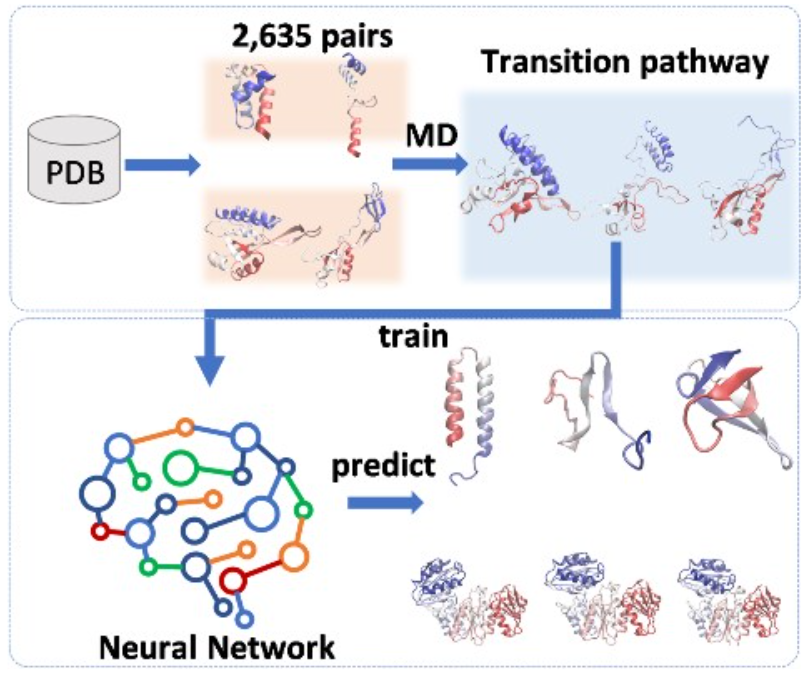Recently, the research team of Prof. WANG Qian from the University of Science and Technology of China (USTC) of the Chinese Academy of Sciences (CAS) and Prof. BAI Fang from ShanghaiTech University have collaborated to propose a deep learning model for predicting protein conformational changes. This achievement has been published online in Advanced Science.
In recent years, deep learning models represented by AlphaFold have achieved tremendous success in predicting the static structures of proteins. However, the function of proteins depends on their dynamic characteristics. Researchers are actively exploring other deep learning algorithms aimed at predicting the dynamic behaviors of proteins, such as conformational changes. One of the main challenges in developing such models is the severe shortage of kinetic data describing conformational transitions.
To overcome this challenge, the researchers integrated a physically constrained coarse-grained molecular dynamics model with enhanced sampling methods to create an efficient computational framework for simulating protein allostery. This framework was used to simulate the conformational changes of 2635 proteins existing in two known stable states, capturing the structural information along each transition pathway. The result of this extensive simulation effort was the first large-scale database of protein dynamics, providing a rich resource for studying protein motion and change.
Leveraging this database, the team developed a general deep learning model named PATHpre, designed to predict the allosteric pathways between two stable states of proteins. The model demonstrated robust predictive capabilities across proteins with varying sequence lengths, from 44 to 704 amino acids, and was effective for multiple allosteric systems, including morphogenic proteins. The researchers validated the model's predictions against experimental and simulation data across several systems, achieving consistent results and even uncovering a novel allosteric regulation mechanism in human β-cardiac myosin, a protein crucial to heart function.
The development of the PATHpre model represents a significant step forward in the predictive modeling of protein dynamics. Its ability to predict not only the transition state but also the entire pathway of conformational changes offers new insights into protein function and regulation. This model has the potential to revolutionize our understanding of protein behavior and could play a critical role in the development of new therapeutics targeting protein misfolding diseases.

The construction process of PATHpre. (Image by USTC)
Paper link: https://onlinelibrary.wiley.com/doi/10.1002/advs.202400884
(Written by CAI Guoyuan, Edited by WU Yuyang, USTC News Center)